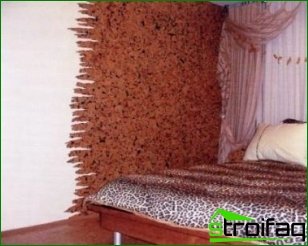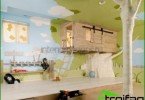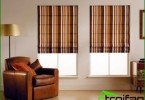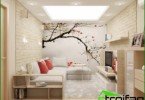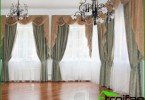If you have to choose material for walls, then you have to make a difficult decision. Today, the market for finishing materials offers a wide selection of products. Most buyers are inclined to pasting their apartment with paper wallpaper. Still, it’s better to find out what alternatives exist for this traditional method..
Textile wallpapers and their features
This type of wallpaper for walls can be made in various ways. One of them is to glue parallel threads onto a paper base, however, textured fabric can also be attached to the base. But no matter how textile wallpapers are produced, they will create the impression of a continuous fabric surface. They are most often used in living rooms, bedrooms or offices..
An important condition for their operation is a constant level of humidity and temperature. They should never be exposed to water. This type of finish has excellent performance: wallpapers save heat and absorb sound. They do not fade in the sun, can be used for a long period of time and are environmentally friendly. If the textile wallpaper is impregnated with a dust-repellent antistatic composition, they will not attract dust. The main disadvantages of this type of finish are their high cost and the fact that they absorb odors.
Liquid wallpaper – original material for the walls
For the domestic buyer, liquid wallpaper or decorative plaster is becoming more and more familiar in the design of lounges. For almost 10 years, we have the opportunity to purchase and perform interior decoration with their help. The material from which liquid wallpaper is made is considered to be environmentally friendly. For the manufacture of their base, high-quality cellulose grades are used that are resin-free. After that, natural fiber of silk, cotton and wool is added to its composition along with an acrylic binder. The main advantages of liquid wallpaper are their antistatic, sound and heat insulation, as well as breathability and resistance to low temperatures. This finishing is realized wall material in the form of a dry mixture. Before application, the mixture must be diluted in water..
The substance is applied to any material: whether it is chipboard or concrete. But before application, the surface of the wall should be primed as it should. Oil paint can be one of the best primers. After the liquid wallpaper dries, a rough surface is formed, which can hide the unevenness of the wall up to 1 cm. Therefore, even uneven walls will become visually even after applying decorative plaster. This type of decoration can become the original decoration of the room..
Paint is an effective material for wall decoration
Suitable wall material may become paints. Their pigments and base must be dispersible in water and form a stable emulsion. Thus, the paint is not dissolved in water, but diluted to the desired consistency. Paints are composed of the smallest particles of polymers that are in suspension in water. When paint is applied to the surface, water evaporates and the polymer film hardens. Now the paint is no longer scary. Features of water-based paints is the absence of harmful fumes and unpleasant odors. After it, the tools and hands are easy to wash with soap. It can be used for application on various surfaces, the only exception being glossy paints..
Water emulsion is permeable to water vapor. Due to this property, it is widely used for brick, concrete and plastered surfaces. This finishing material contributes to the creation of a healthy indoor microclimate and does not exfoliate. Paints and varnishes include not only paints and varnishes, but also primers, enamels, and putties – they are all made using similar technology. In each of these substances there is a binding base – the material that forms the film. In addition, they contain pigment, with which they create the desired color, and a filler that is responsible for gloss, strength and other properties.
These are just some of the analogues to paper wallpaper. There are also vinyl, cork and even metal wall coverings. Each of these types of wallpapers has its advantages and disadvantages, as well as operating conditions. After reading them, you can choose the best material for wall decoration. By the way, many of the wallpapers can be an excellent material for the ceiling in the room..
